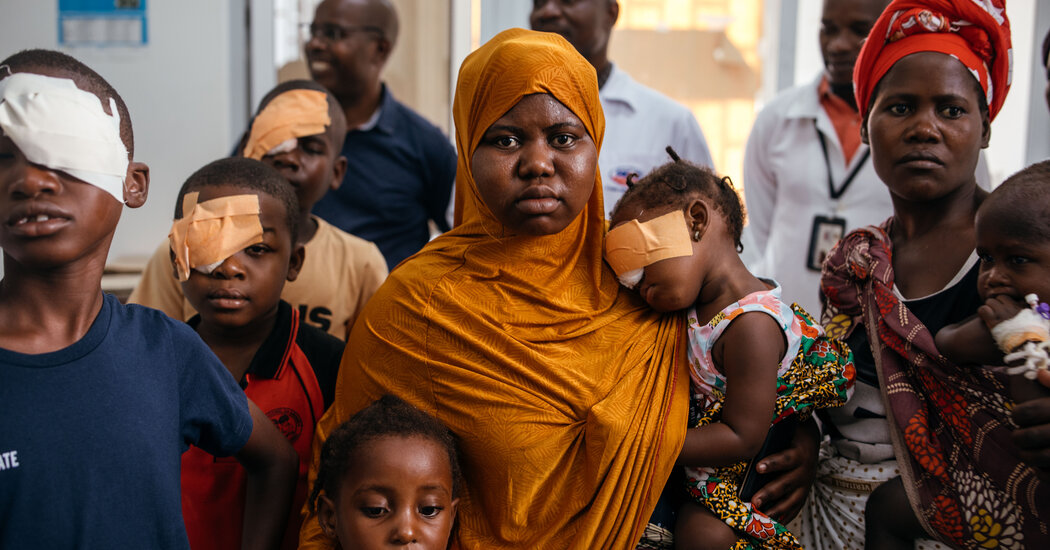Over the past year, Muanema Fakira noticed something odd about the eyes of her 1-year-old daughter Sumaya. Her left eye was cloudy. It did not gleam with curiosity or glint in the sun. When the problem persisted, Ms. Fakira made the rounds to health clinics in their town in central Mozambique. Doctors said they could not help. But they knew of someone who could, if Ms. Fakira could take Sumaya, now 2, on a 100-mile journey to the coast.
The family made the trip to the city of Quelimane, where Dr. Isaac Vasco da Gama examined Sumaya’s eyes and quickly diagnosed a congenital cataract. Ms. Fakira was skeptical — cataracts are for old people, she said. But Dr. da Gama explained that an infection at birth, or shortly after, can cause cataracts in children. The condition is particularly worrying because vision problems affect the development of a child’s physical function. But the good news, he said, was that the problem can be solved with a simple surgery, one he does a dozen times a week at Quelimane Central Hospital.
Sumaya had her surgery in November, and a day later headed home, already recovering. Dr. da Gama was pleased to have seen her while she was still young, before permanent damage was done. It was a sign that a system he and colleagues have been trying to put in place for the last few years might be taking hold. Sumaya’s parents sought help from the medical system for an eye problem — rather than a traditional healer, or a sorcerer to remove a curse.
In Mozambique, as in much of sub-Saharan Africa, awareness of vision problems is so low, and access to help so limited, that few children get the care they need, even though many suffer from easily treatable problems. In 2021, a global commission on eye health reported that 510 million people around the world, 90 percent of them in low- and middle-income countries, had uncorrected vision impairment. That is, they could not see properly because they did not have glasses.
The consequences are enormous: Children with vision loss in these countries are significantly less likely to be in school. One study found that for those who do attend school, those with uncorrected vision problems learn half as much as their peers with normal vision.
Dr. da Gama completed his studies in India in 2017 and set up a clinic in Quelimane, a seaport town halfway up Mozambique’s long Indian Ocean coastline. But to his surprise, he saw very few patients in the first year. He discovered that no one was being referred to him because health workers did not recognize treatable eye diseases. He started traveling to local clinics to tell medical workers about screening and solutions.
Cataracts cause nearly half the preventable blindness in Mozambique’s children; they can be genetic, or the result of trauma (like a stick or a stone in the eye), or of an untreated eye infection. On his outreach journeys, Dr. da Gama teaches other health care workers how to perform the simple surgeries, and how to spot the conditions. “Operating per se is not a problem: We can train in a week, two weeks, how to operate on a cataract,” he said. “But it is how to identify the children who need the operations.”
Mozambique’s Ministry of Health is trying to build awareness of vision problems and refractive errors, for which a pair of glasses is a life-altering intervention. Glasses or simple surgeries that keep children in school can change the future for their families, and for the country as a whole. “If you have children less educated or with fewer skills,” he said, “the future of the economy is affected.”
In Quelimane, Dr. da Gama also sees cases of retinoblastoma, a cancer of the retina. When patients come early enough, he can save their lives, if not their eyes.
Source link




